What kind of sunscreen is best?
Published on August 29, 2024 by Kyle Yamamoto
Summer is in full swing! By now you have undoubtedly taken advantage
of what Northern Nevada has to offer in the summer including hiking, biking,
and the beach. How are you taking care of your face during the summer months?
of what Northern Nevada has to offer in the summer including hiking, biking,
and the beach. How are you taking care of your face during the summer months?
One of the most common questions I get in my office is: “if
I could pick just one thing to do for my face, what do you suggest?” My answer is always the same and is very
appropriate this time of year: sunscreen!
I could pick just one thing to do for my face, what do you suggest?” My answer is always the same and is very
appropriate this time of year: sunscreen!
Protecting your face from sun damage over the summer, and
quite honestly, everyday throughout your life, is the single most important
thing to do for your face. Sun exposure contributes to early aging of the skin
(think of sun spots and fine wrinkles), loss of elastin or “stretchiness” of
the skin (those dreaded jowls and sagging neck skin), and increases your risk
of skin cancer. Those who continually protect their face from the sun will
enjoy more youthful skin, fewer problems with sun spots, and have a lower risk
of developing suspicious lesions that turn into skin cancer.
quite honestly, everyday throughout your life, is the single most important
thing to do for your face. Sun exposure contributes to early aging of the skin
(think of sun spots and fine wrinkles), loss of elastin or “stretchiness” of
the skin (those dreaded jowls and sagging neck skin), and increases your risk
of skin cancer. Those who continually protect their face from the sun will
enjoy more youthful skin, fewer problems with sun spots, and have a lower risk
of developing suspicious lesions that turn into skin cancer.
In that case, what is the best way to protect your face from
the sun?
the sun?
Big hats (go beyond the baseball cap or trucker hat and
think bigger, like a big brimmed straw hat or cowboy hat) and regular,
consistent sunscreen are your best bets. When it comes to sunscreen, a lot of
different products exist. While impossible to talk about all types of
sunscreens in this column (I do have a 30-minute presentation just on sunscreen
that I like to give this time of year), I think some basics are very important:
think bigger, like a big brimmed straw hat or cowboy hat) and regular,
consistent sunscreen are your best bets. When it comes to sunscreen, a lot of
different products exist. While impossible to talk about all types of
sunscreens in this column (I do have a 30-minute presentation just on sunscreen
that I like to give this time of year), I think some basics are very important:
- There are 2 types of sunscreens – physical sunblocks
and chemical sunscreens - Physical sunblocks reflect the UV light from the
sun like a mirror, while chemical sunscreens break down the UV light in the
skin. - The chemical blocks are the most common and what
you will typically find at a drug store.
They are cheaper to produce, and therefore cheaper to purchase. - Physical blocks contain either zinc oxide or
titanium oxide or both. Think of the old school zinc sunblocks of the past (the
lifeguard with the white nose). The modern sunblocks, however, are made to no
longer be white and blend into the skin. Some are even tinted to the color of
your skin.
While either type can work for your skin, I prefer physical
block sunscreen for a few reasons:
block sunscreen for a few reasons:
·
Because physical blocks sit on your skin and do
not soak in, they are more hypoallergenic compared to chemical blocks.
Because physical blocks sit on your skin and do
not soak in, they are more hypoallergenic compared to chemical blocks.
- Because the UV light is reflected off your skin
with the physical blocks, oxidative damage with breakdown of the UV light is
prevented, eliminating some theoretical skin aging with chemical sunscreens. - Physical blocks tend to be more broad spectrum
compared to many chemical sunscreen ingredients and protect from both UVA and
UVB
Finally, regardless of what sunscreen you choose, here are
some key tips:
- The SPF of the sunscreen should be at least 30
or higher. - Make a habit of putting sunscreen on your face
every day in the morning, all year long. Find one with a facial moisturizer
mixed in to make it even easier. - Apply sunscreen every 80-120 minutes if you are
going to have prolonged exposure to the sun during the day.
·
Finally, remember your kids! Sun exposure as a
child can have significant effects on you when you get older, so be sure to
apply sunscreen to your kids any time they will be out in the sun. They will thank you for it in the future.
Finally, remember your kids! Sun exposure as a
child can have significant effects on you when you get older, so be sure to
apply sunscreen to your kids any time they will be out in the sun. They will thank you for it in the future.
If you are looking for some great, medical-grade sunscreens
that protect you from the sun and are good for your skin, we have a very
popular line here at our office. It’s the best, most useful gift of the season!
that protect you from the sun and are good for your skin, we have a very
popular line here at our office. It’s the best, most useful gift of the season!
Here’s to the beautiful human face,
-Dr. Yamamoto
